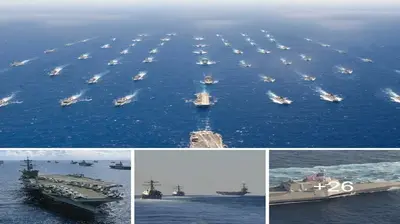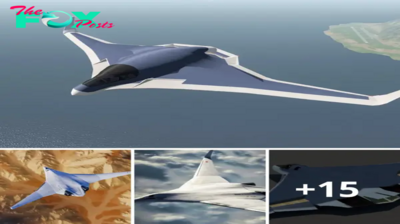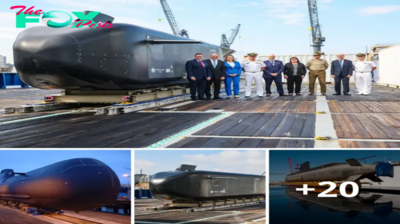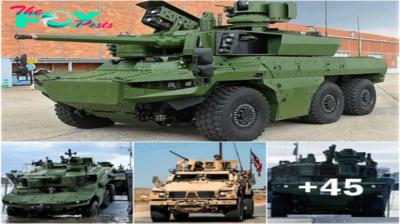Ever since the submersible American Turtle set sail during the Revolutionary War, undersea warfare Technology has been thriving. The last two centuries have seen these ships grow from small wooden minnows, tasked with destroying as a single ship, to gargantuan steel leviathans able to carry a full thermonuclear arsenal.

With the dawn of the Cold War, the submarines’ mission has become one of deterrence and infiltration. Therefore, the design of modern submarines has evolved to include the latest sonar and sensor technology. Much like their floating counterparts, submarines also house a wide assortment of weapons. Because of this, today’s submarines are now the size of World War II aircraft carriers.
To that end, here is a list of the largest Submarines of the military, ranked by length.
15/15 Russian Navy Yasen-Class (364 Feet)

It’s designated as the replacement for the aging Akula and Alfa-Class submarines. The Yasen is the first Russian submarine to carry modern spherical sonar. Due to its design, which features a low-magnetic steel hull, the Yasen is considered one of the quietest subs in the Russian navy. Armed with eight torpedo tubes, and the ability to launch cruise and anti-ship missiles, these subs can wreak havoc on the enemy.
14/15 Russian Navy Akula-Class III (Length: 372 Feet)

When it launched in 1985, the Akula gained a reputation as a sneaky little shark patrolling the world’s oceans. The sub’s arrival caused a ripple effect throughout the West, as a challenge to U.S. Naval supremacy. Defense analyst Norman Polmar noted the appearance of the Akula, “Shook everyone up.” Its primary mission is to monitor NATO submarine activity and it continues to operate today.
13/15 US Navy Virginia-Class (Length: 377 Feet)

The smallest American sub on our list, but not small in terms of firepower. The Virginia-Class boasts a wide array of cutting-edge weaponry. This includes; 12 Tomahawk cruise-missile tubes, four torpedo tubes, and a Harpoon multi-purpose launcher. Its main mission is anti-submarine warfare and intelligence gathering.
12/15 Imperial Japanese Navy I-400 Sendoku-Class (Length: 400 feet)

By far the largest submarine of World War II, the Japanese I-400 doubled the size of its American counterparts. Its 8 Bow torpedo tubes pack quite a punch, in addition to a 5.5-inch deck gun, and three 25-millimeter autocannons (2 Bow, 1 Aft). The I-400 also included its very own hangar, housing three M6A Sieran Seaplanes in a watertight compartment. Due to its complexity, only five Type-400 were completed.
11/15 Chinese Navy Type 094 Jin-Class (Length: 442)

An update on China’s original Type 092 Ballistic Nuclear Submarine, the Jin-Class represents the country’s first attempt at a sea-faring nuclear deterrent. Its armed with 12 nuclear-missile tubes, and modern sensor and quieting technology. GlobalSecurity.org states that five Jin-Class subs will be in operation for the foreseeable future. It will patrol the Pacific Ocean and the South China Sea.
10/15 French Navy Triomphant-Class (Length: 453 Feet)

The first ballistic missile submarine to come from France, the Triomphant represents a tough challenger to all foreign enemies. It carries 16 ballistic missiles, each with six independent re-entry vehicles. In addition, it houses four torpedo tubes and can launch sub-sonic anti-ship missiles. The class of four submarines first launched in 1997, with the last launching in 2010.
9/15 British Navy HMS Vanguard-Class (Length: 491 Feet)

Much like France’s Triomphant-Class, the Vanguard-Class submarine serves as the United Kingdom’s nuclear deterrent against foreign aggressors. Not only are they a deterrent, but they are also the only weapons platform for the UK’s nuclear armament. The Vanguard is also equipped with four 21-inch bow torpedo tubes, long-range heavy torpedoes, and two decoy launchers.
8/15 British Navy HMS Dreadnought-Class (Length: 504 Feet)

Here we have a look into the future with the next British submarine. The eloquently called Dreadnought-Class will serve as the replacement for the Vanguard-class submarine. While details about the new sub are scant, UK Defense Journal notes the new class will have increase autonomy, a cheaper sensor array, and a common missile department. The Dreadnought will be hitting the seas by the early 2030s.
7/15 Russian Navy Oscar II-Class (Length: 508.5 Feet)

During the early 1990s, this cruise-missile carrying submarine was tasked with destroying NATO carrier groups. That’s in case war ever broke out, though. Its double-hulled design and covered sail are designed to break through the artic ice during war-time operations. This allows the Oscar to maintain speed and maneuverability without compromising hull strength. It’s armed with 24 cruise missiles and an assortment of anti-ship weaponry. The Oscar will remain in Russia’s arsenal for the foreseeable future.
6/15 Russian Navy Delta IV-Class (Length: 544 Feet)

Following the footsteps of its predecessor, the Delta IV-class served as the backbone for the Soviet Submarine fleet at the end of the Cold War. Its primary mission is striking down Military and industrial targets inland. The 16 ballistic missiles tubes can be launched with a single salvo while on the move. With the introduction of the Borei class, the Deltas’ now serves in a support role for Russia’s submarine fleet.
5/15 Russian Navy Borei-Class (Length: 557 Feet)

4/15 US Navy Ohio-Class (Length: 560 Feet)

When the Ohio-class first set out on the sea in 1981, it was the largest submarine ever made for the United States Navy. The first four submarines in its class are converted to carry cruise missiles. The rest continue to carry ballistic nuclear missiles while on patrol. Its normal armament includes; four bow torpedo tubes, and deliver Navy SEALS plus Marines right to the battlefield.
3/15 US Navy Columbia-Class (Length: 561 Feet est.)

The future of America’s nuclear deterrence lies with the Columbia-class. A replacement for the current Ohio-class, it will be a much more cost-effective option over its 40-year lifecycle. Unlike its predecessor, the Columbia will never need to refuel during its service. Furthermore, it will incorporate an electric-drive system, reducing its audio signature, and reducing maintenance costs. Expect to see these subs hit the high seas over the next decade.
2/15 Russian Navy Typhoon-Class (Length: 574 Feet)

The vaunted Typhoon-class may not be the longest submarine in the world, but thanks to its sheer girth, it’s by far the heaviest and most massive one. No other submarine can match its awesome proportions, measuring 574 feet in length. It displaces more than twice the tonnage than its modern-day counterparts.
The Typhoon was used as a nuclear deterrent during the heyday of the Cold War. Our Tolu Akinshete notes, while the Typhoon never went into battle, its sheer presence gave the United States and NATO a good jolt of fear. Of the six subs built, one is still in service today.
1/15 Russian Oscar-II Class Belgorod (604 Feet)

As mentioned, the famous Typhoon Class submarine may be the biggest in the world by displacement, but the Belgorod takes the cake for the longest at a gargantuan 604 feet. That’s the equivalent to the height of a 50-story skyscraper or about 20 school buses in a row. It was launched only last year and is unique in that it features a smaller submarine (dubbed the Losharik) that attaches to the bottom part of its hull and can be deployed.
Both submarines are nuclear-powered and nearly impenetrable, but while the Losharik will be used for covert missions and underwater espionage, the Belgorod can deploy some of the largest and deadliest torpedos ever created – the Poseidon. It’s rumored to be a 2-megaton nuclear warhead torpedo measured at 65 feet and able to Travel for thousands of miles.











































